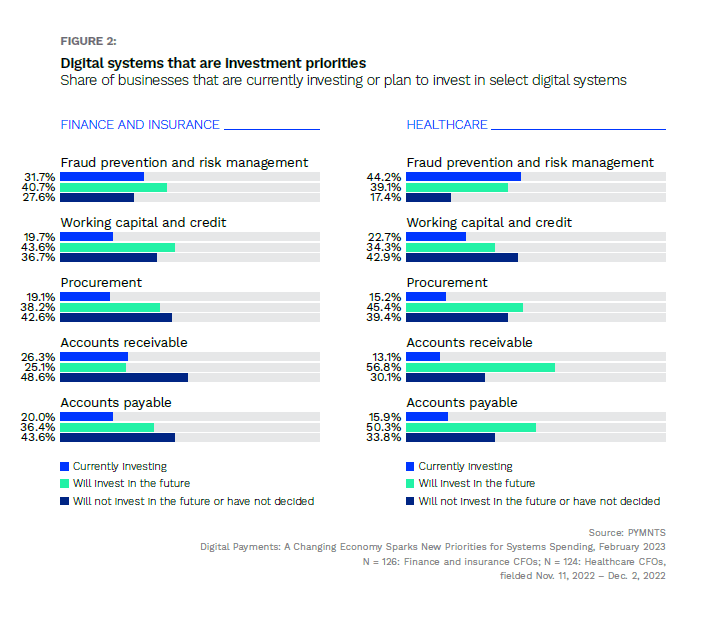Healthcare Firms a Step Behind in Automating Accounts Payable Processes
The healthcare industry overall has an employment problem. Seeing a sharp personnel exodus post-pandemic, the industry continues to lose workers. The Bureau of Labor Statistics January employment report notes a 21% employment dip in “healthcare and social assistance” from the previous month, far outpacing personnel loss across other industries.
It is hard to tell how much of this job loss directly affects roles related to back-office systems, such as fraud prevention and procurement. However, the sector’s strained employment situation may require firms to employ every tool available to adapt to this continued personnel need. That may include modernization — specifically automating overlooked systems to make up for the shortfall.
As evidenced in the latest PYMNTS/Corcentric collaboration, “Digital Payments: A Changing Economy Sparks New Priorities for Systems Spending,” digital accounts payable (AP) and accounts receivable (AR) systems are two areas the healthcare industry may be able to improve their efficiencies.

There’s clearly room for improvement, with only 13% of industry businesses currently investing in AR and 16% in AP digital systems, sector CEOs are noticing this gap. Of surveyed healthcare CEOs, 50% and 53% say they plan to invest in digital AP and AR improvements, respectively. Although investment plans are certainly better than nothing, one would hope for higher rates of current investment, such as those seen in the finance and insurance industries.
In an interview with PYMNTS’ Karen Webster, Beanworks CEO Catherine Dahl explained the importance of AP automation, especially when relieving the employment burden and associated outlay to make up for the gap across the healthcare industry. “Anywhere where you can save money on necessary things, if it can be automated, it should be automated. That’s true in any industry, but it’s going to have a bigger impact in the long run within the medical system. If we can get everything laborious and repetitive into an automated state, payables [is] one of many things that patient care and medical services groups need to think about [automating].”
FinTechs focused on payments-related systems automation for the sector are trying to ease the near industry-wide transition. For example, Lynx is making headway in disrupting current healthcare AP/AR systems through platforms and application programming interface integration innovations. Among other advantages, systems such as Lynx’s help the healthcare personnel gap is by providing real-time transparency. Sector employers may see less learning curve lag when onboarding new employees.
Change, especially when it comes to long-held systems, is tough. But with an employment gap that may not see positive gains anytime soon, healthcare businesses may consider back-office digital system improvements such as in AP/AR as one approach to bridging the divide.